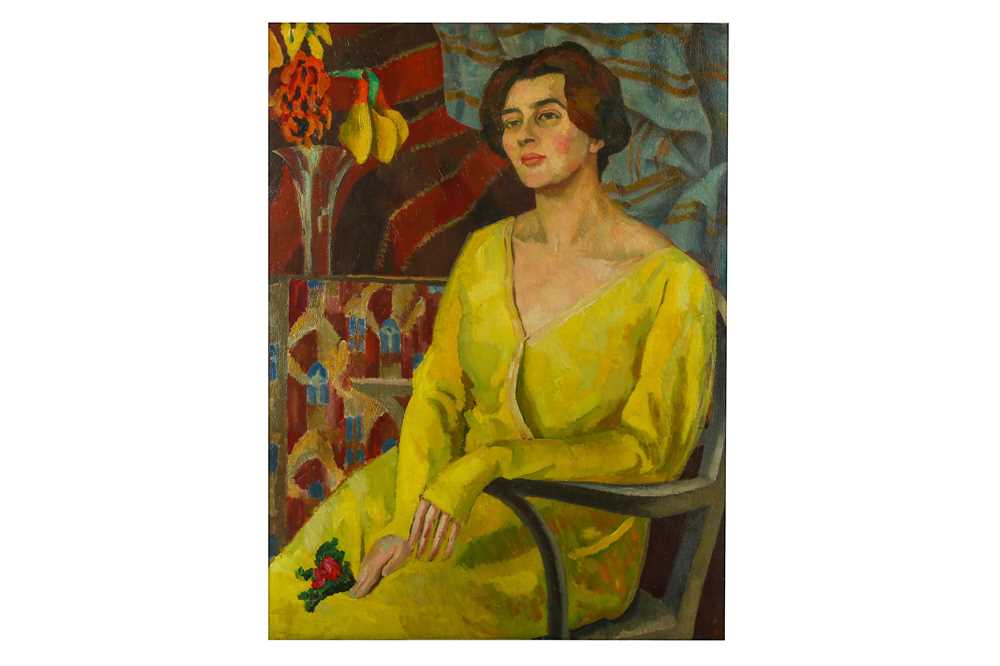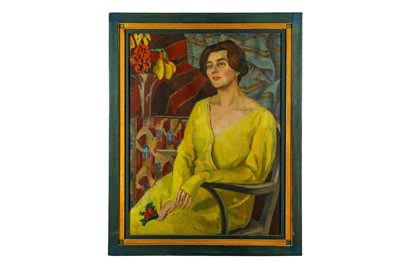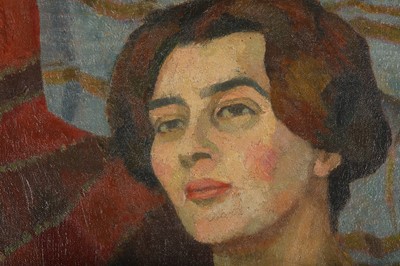3rd Dec, 2019 10:00
Modern & Post-War British Art
ROGER FRY (BRITISH, 1866-1934)
Lalla Vandervelde
oil on canvas
91.5 x 71 cm (36 x 28 in)
Painted in 1917
Provenance
With Michael MacCarthy (son of Desmond and Molly MacCarthy), by 1960s with Gallery Edward Harvane, London, by early 1974 with Belgrave Gallery, London, by 1980, where acquired by the present owner
Private collection, France
Exhibited:
London, Gallery Edward Harvane, Bloomsbury Pie, 1974, no. 24 London, Gallery Edward Harvane, A Homage to Duncan Grant, 1975, no. 27 London, Courtauld Gallery, Portraits by Roger Fry, 1976, no. 19, this exhibition travelled to Sheffield, Mappin Art Gallery, Portraits by Roger Fry, 1976, no 19 London, Courtauld Gallery, Art Made Modern. Roger Fry’s Vision of Art, 1999, no.77
Literature:
D. Sutton, (ed.), Letters of Roger Fry, 1974, London, vol. II, pl. 74, illustrated F. Spalding, Roger Fry: Art and Life, London, 1999, no.59, illustrated Exhibition catalogue, C. Green (ed.), Art Made Modern, Roger Fry’s Vision of Art, London, 1999, p. 122, no. 77, fig. 72, illustrated
We are grateful to Richard Shone for his assistance in cataloguing this lot.
Painted in 1917, Roger Fry’s depiction of Lalla Vandervelde ranks among his finest portraits. Lalla wears an alluring low-cut yellow dress and in the background is a vase of paper flowers from the Omega Workshops as well as a piece of Omega designed ‘Margery’ fabric. The work belongs to a striking group made in the First World War which includes Edith Sitwell and Nina Hamnett. The setting was Fry’s studio at 21 Fitzroy Street. In December 1917 Fry wrote to Vanessa Bell that ‘Lalla’s very good and punctual and sits very well’ (R. Fry to V. Bell, 12th December 1917). Lalla and Fry were great friends and almost certainly lovers (London gossips certainly thought so). She supported Fry’s Omega Workshops, bought paintings by Duncan Grant and Vanessa Bell, and in early 1916 Fry and his Omega assistants decorated her Chelsea flat for her. (Several pieces, including her bed, are now in the Victoria & Albert Museum). Born Charlotte Helen Frederique Speyer in Camberwell, London in 1870, Lalla’s father Eduard Anton Speyer, of German Jewish descent, was a rich financier. In 1901 she became the wife of Emile Vandervelde (1866-1938), a prominent leader in the Belgian Socialist Party and later a Minister of State. During and after the First World War Lalla entertained many writers and painters and was devoted to the Belgian refugees in London. Although later estranged from her husband, she remained faithful to his Socialist and pacifist beliefs and was not averse to using her position as a Minister’s wife to further any cause she espoused. Osbert Sitwell described her as ‘a woman of striking intelligence and humour’… her war-time home being … ‘the resort of modern painters and writers, and of the more unconventionally minded of politicians…. Intrepid in mind, with a liking for all new ideas, in music, literature or politics – indeed she tended, perhaps, to like the new for its newness’ (O. Sitwell, Laughter in the Next Room, 1949, p. 9). She was friendly with a number of writers including Arnold Bennett and George Bernard Shaw, and was intimate with Edward Elgar. In 1925 she published her autobiography titled Monarchs and Millionaires. Her character is nicely summed up in her late motor racing endeavours, having taken up the sport as a hobby at the age of sixty. Allanah Harper, editor of Echanges, describing Lalla in Brussels in the late 1920s with ‘flaming, dyed red hair’ driving very fast in an open-topped car. Rumoured to have kept a stream of lover into her old age, Lalla died in London in 1965. Fry had founded The Burlington Magazine in 1903, been appointed Curator of Paintings at The Metropolitan Museum of Art, New York in 1906, and in 1910 organised the seminal exhibition Manet and the Post-Impressionists at the Grafton Galleries, London. It was at this time also that he became associated with the Bloomsbury circle, and it was during the following decade that portraiture in his oeuvre flourished. Working closely with Clive Bell and Duncan Grant, Fry sought to create a ‘directness of sensuous response’ in his compositions, his sitters typically being relaxed, with his finished works epitomizing the personal relationships held between him and his subjects, as in the present example.
ARR
Sold for £30,000
Includes Buyer's Premium
Do you have an item similar to the item above? If so please click the link below to submit a free online valuation request through our website.





